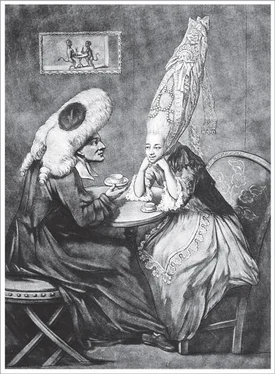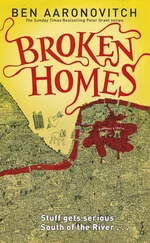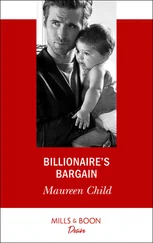Bill Bryson - At Home
Здесь есть возможность читать онлайн «Bill Bryson - At Home» весь текст электронной книги совершенно бесплатно (целиком полную версию без сокращений). В некоторых случаях можно слушать аудио, скачать через торрент в формате fb2 и присутствует краткое содержание. Жанр: Старинная литература, на английском языке. Описание произведения, (предисловие) а так же отзывы посетителей доступны на портале библиотеки ЛибКат.
- Название:At Home
- Автор:
- Жанр:
- Год:неизвестен
- ISBN:нет данных
- Рейтинг книги:4 / 5. Голосов: 1
-
Избранное:Добавить в избранное
- Отзывы:
-
Ваша оценка:
- 80
- 1
- 2
- 3
- 4
- 5
At Home: краткое содержание, описание и аннотация
Предлагаем к чтению аннотацию, описание, краткое содержание или предисловие (зависит от того, что написал сам автор книги «At Home»). Если вы не нашли необходимую информацию о книге — напишите в комментариях, мы постараемся отыскать её.
At Home — читать онлайн бесплатно полную книгу (весь текст) целиком
Ниже представлен текст книги, разбитый по страницам. Система сохранения места последней прочитанной страницы, позволяет с удобством читать онлайн бесплатно книгу «At Home», без необходимости каждый раз заново искать на чём Вы остановились. Поставьте закладку, и сможете в любой момент перейти на страницу, на которой закончили чтение.
Интервал:
Закладка:
Fires in public places became a great worry, too, especially after the development of a now-forgotten but lively form of illumination known as the Drummond light, named for a Thomas Drummond of Britain’s Royal Engineers, who was popularly but wrongly credited with its invention in the early 1820s. It was in fact invented by a Sir Goldsworthy Gurney, a fellow engineer and an inventor of considerable talent. Drummond merely popularized the light and never claimed to have invented it, but somehow the credit became attached to him and has remained there ever since. The Drummond light, or calcium light as it was also called, was based on a phenomenon that had been known about for a long time—that if you took a lump of lime or magnesia and burned it in a really hot flame, it would glow with an intense white light. Using a flame made from a rich blend of oxygen and alcohol, Gurney could heat a ball of lime no bigger than a child’s marble so efficiently that its light could be seen sixty miles away. The device was successfully put to use in lighthouses, but it was also taken up by theaters. The light not only was perfect and steady but also could be focused into a beam and cast onto selected performers—which is where the phrase in the limelight comes from. The downside was that the intense heat of limelight caused a lot of fires. In one decade in America, more than four hundred theaters burned down. Over the nineteenth century as a whole, nearly ten thousand people were killed in theater fires in Britain, according to a report published in 1899 by William Paul Gerhard, the leading fire authority of the day.
Fire was even a danger for people on the move—indeed, often more so since means of escape were constrained or impossible on various modes of transportation. In 1858, when the immigrant ship Austria caught fire at sea en route to the United States, nearly five hundred people perished horribly as the vessel was consumed beneath them. Trains were dangerous, too. From about 1840, passenger carriages came with wood- or coal-burning stoves in the winter and oil lamps to read by, and the scope for catastrophes on a lurching train is easily imagined. As late as 1921, twenty-seven people perished in a stove fire on a train near Philadelphia.
On solid land, the greatest fear with fires was that they would get out of control and spread, destroying whole districts. The most famous urban fire in history is almost certainly the Great Fire of London of 1666, which began as a small fire in a bakery near London Bridge but quickly spread until it was half a mile across. As far away as Oxford, people could see the smoke and hear the fire as a small, eerie whisper. Altogether, it consumed 13,200 houses and 140 churches. But the fire of 1666 was actually the second Great Fire of London. A fire in 1212 was far more devastating. Though smaller in extent than the one of 1666, it was swifter and more frenzied, and leaped from street to street with such dreadful rapidity that many fleeing citizens were overtaken or left without escape routes. It was also more deadly, claiming twelve thousand lives (versus five people killed in the 1666 fire, as far as is known). For 454 years, the fire of 1212 was known as the Great Fire of London. It really still ought to be.
Most cities suffered devastating fires from time to time; some had them repeatedly. Boston had them in 1653, 1676, 1679, 1711, and 1761. Then it had a lull until the winter of 1834, when a fire in the night burned down seven hundred buildings—most of the downtown—and grew so fierce that it spread to ships in the harbor. But all city fires pale when compared with the fire that swept through Chicago on a windy night in October 1871, when a cow owned by a Mrs. Patrick O’Leary reputedly kicked over a kerosene lantern in a milking shed on DeKoven Street, and all kinds of dreadful mayhem swiftly followed. The fire destroyed 18,000 buildings and made 150,000 people homeless. Damages topped $200 million and put fifty-one insurance companies out of business. The following year, Boston had another big fire, which destroyed nearly 800 buildings and left 60 acres of smoldering waste.
Where houses were packed close together, as in European cities, there wasn’t a great deal anyone could do, though housebuilders did come up with one useful remedy. Originally, the joists in English terraced houses ran from side to side and sat on the partition walls between houses. This essentially created a linear run of joists along a block, heightening the risk of fires spreading from house to house. So from the Georgian period, joists were run front to back in houses, turning the partition walls into firebreaks. However, having joists run from the front of the house to the back meant they needed supporting walls, which dictated room sizes, which in turn determined how rooms were used and houses lived in.
One natural phenomenon promised to eliminate all the foregoing dangers and shortcomings: electricity. Electricity was exciting stuff, but it was hard to devise practical applications for it. Using the legs of frogs and electricity from simple batteries, the eighteenth-century Italian physician and physicist Luigi Galvani showed how electricity could make muscles twitch. His nephew, Giovanni Aldini, realizing that money could be made from this, devised a stage show in which he applied electricity to animate the bodies of recently executed murderers and the heads of guillotine victims, causing their eyes to open and their mouths to make noiseless shapes. The logical assumption was that if electricity could stir the dead, imagine how it might help the living. In small doses (at least we may hope they were small), it was used for all kinds of maladies, from treating constipation to stopping young men having illicit erections (or at least enjoying them). Charles Darwin, driven to desperation by a mysterious lifelong malady that left him chronically lethargic, routinely draped himself with electrified zinc chains, doused his body with vinegar, and glumly underwent hours of pointless tingling in the hope that it would effect some improvement. It never did.
The real need was for a practical electric light. In 1846, rather out of the blue, a man named Frederick Hale Holmes patented an electric arc lamp. Holmes’s light was made by generating a strong electric current and forcing it to jump between two carbon rods—a trick that the British chemist Sir Humphry Davy had demonstrated but not capitalized on more than forty years earlier. In Holmes’s hands the result was a blindingly bright light. Almost nothing is known about Holmes—where he came from, what his educational background was, how he learned to master electricity. All that is known is that he worked at the École Militaire in Brussels, where he developed the concept with a Professor Floris Nollet, then returned to England and brought his invention to the great Michael Faraday, who saw at once that it could provide a perfect light for lighthouses.
The first one was installed at the South Foreland Lighthouse, just outside Dover, and powered up on December 8, 1858.* It ran for thirteen years, and others were installed elsewhere, but arc lighting was never a huge success because it was complicated and expensive. It required an electromagnetic motor and a steam engine together weighing two tons, and needed constant attention to run smoothly.
The one thing to be said for arc lamps was that they were amazingly bright. St. Enoch’s Railway Station in Glasgow was lit with six Crompton lamps—named for R. E. Crompton, their manufacturer—that each boasted 6,000 candlepower. In Paris, a Russian-born inventor named Paul Jablochkoff developed a form of arc lights that came to be known as Jablochkoff candles. Used to light many Parisian streets and monuments in the 1870s, they became a sensation. Unfortunately, the system was expensive and didn’t work very well. The lights operated in sequence: if one failed, they all failed, like Christmas lights. Failing was something they did a lot. After just five years, the Jablochkoff Company fell into bankruptcy.
Читать дальшеИнтервал:
Закладка:
Похожие книги на «At Home»
Представляем Вашему вниманию похожие книги на «At Home» списком для выбора. Мы отобрали схожую по названию и смыслу литературу в надежде предоставить читателям больше вариантов отыскать новые, интересные, ещё непрочитанные произведения.
Обсуждение, отзывы о книге «At Home» и просто собственные мнения читателей. Оставьте ваши комментарии, напишите, что Вы думаете о произведении, его смысле или главных героях. Укажите что конкретно понравилось, а что нет, и почему Вы так считаете.












